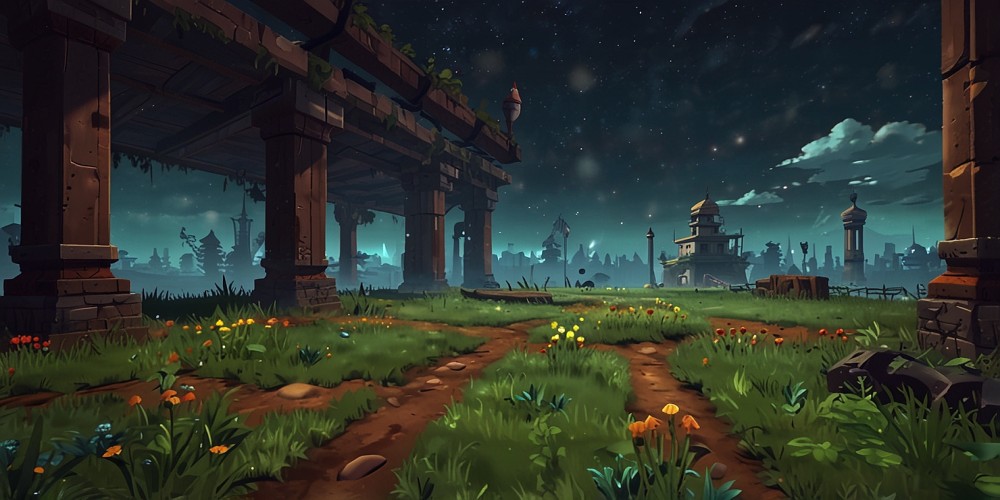
Unearthing Hidden Treasures: Amazing World of Indie Games
- 03 Sep 2024
- Germaine Pieper
Every gamer knows the thrill of discovering a hidden gem. You know, that moment when you stumble upon a game that flies under the radar yet offers an experience just as captivating, if not more so, than big-budget titles. It’s like finding treasure in the unlikeliest of places, and trust me, there are indie games out there just waiting to surprise you. Today, we’re going to dive deep into some underrated indie titles that deserve way more attention than they’ve gotten. Let’s set out on this journey together—because these games are worth every minute of your time.
Why Indie Games Deserve Your Attention
Now, let’s get one thing straight: indie games aren’t just budget versions of the big titles. In fact, they often push boundaries in ways that mainstream games can’t. Indie devs aren’t restricted by the demands of large publishers. They have the freedom to experiment, to innovate, and to create truly unique experiences. But because these games don’t always have the marketing power behind them, they sometimes get lost in the sea of new releases. And that’s a real shame.
The Magic of Quirky Mechanics
Let’s talk gameplay. What’s the first thing you notice when playing an indie game? The mechanics, right? Many indie titles play with mechanics that make you think, “Whoa, that’s new.” Take, for instance, Baba Is You. It’s a puzzle game that rewrites the rules of, well, everything. The beauty of it lies in how you manipulate the game’s rules as part of the puzzle-solving process. It’s mind-bending, no joke. Yet, despite its brilliance, it’s often overshadowed by flashier titles.
Another gem is Hollow Knight. Yes, it has gained more recognition over time, but back when it first dropped, it was easy to overlook. This game blends Metroidvania-style exploration with gorgeous hand-drawn art and tight, responsive controls. And if you love a challenge, its combat will keep you on your toes. Plus, the lore is like peeling layers of an onion—there’s always something deeper to uncover.
Storytelling That Hits You Right in the Feels
Not all indie games are about intense action or mind-boggling puzzles. Some tell stories that leave a lasting impression. Celeste, for example, is more than just a platformer. It’s a heartfelt story about overcoming personal demons. It’s the kind of game that makes you reflect on your own life, your own challenges, while still offering top-notch gameplay. The emotional weight behind the protagonist’s struggle is something that sticks with you long after you’ve put the controller down.
On the other hand, you’ve got a title like A Short Hike, a game that’s all about taking things slow. The world is your playground, and the journey is as much about exploration as it is about self-discovery. It’s simple, yet profound. There’s no rush to get to the end, and that’s exactly what makes it so special. The experience is calming, almost meditative, in a way that AAA titles rarely manage to achieve.
Visuals That Are Works of Art
Now, let’s talk about visuals. Many people think that indie games are just pixel art throwbacks to the 90s, but that couldn’t be further from the truth. Sure, pixel art has its charm, and there are plenty of indie games that use it brilliantly. Hyper Light Drifter is a great example of how stunning pixel art can be, with its vibrant, almost dreamlike landscapes and fluid animation. But indie devs don’t stop there.
Games like GRIS elevate visuals to an art form. Every frame of this game looks like a painting, with colors and shapes that evoke powerful emotions. It’s the kind of game where you could easily just sit back and admire the scenery, soaking in every meticulously crafted detail. It’s not about the most realistic graphics—it’s about creating a world that you’ll remember long after the credits roll.
The Unsung Multiplayer Experiences
When we think of multiplayer games, the big names like Fortnite or Call of Duty come to mind. But what if I told you that some of the most enjoyable multiplayer experiences can be found in lesser-known indie games? Take Overcooked! , for instance. If you’ve ever wanted to test the strength of your friendships, this chaotic cooking game is the way to do it. You and your friends will be laughing, shouting, and probably failing miserably as you try to keep up with the increasingly absurd kitchen challenges. But that’s the fun of it! And while it has gained some fame, it’s still criminally underrated for the sheer fun it offers.
Then there’s Lovers in a Dangerous Spacetime. A colorful, frantic co-op game that requires you and your friends to navigate a spaceship through treacherous environments. What sets this one apart is the level of coordination it demands. It’s a wild ride and a prime example of how indie games can create incredibly unique multiplayer experiences without needing the big bucks of larger titles.
Innovation Meets Heart
Here’s the thing: indie games don’t just innovate for the sake of it. More often than not, they have heart. You can feel the passion that the developers pour into these projects. They aren’t chasing trends or trying to cater to the widest possible audience—they’re making the games they want to make. And in doing so, they create something that resonates with those who stumble upon it.
Look at Undertale, a game that, despite its simple graphics, managed to flip the RPG genre on its head. It’s quirky, funny, and emotionally impactful in ways you wouldn’t expect from its humble appearance. The moral choices you make affect the game in ways that go beyond a simple “good or bad” binary. It’s a game with a soul, and it’s one of the reasons indie titles have become such an important part of the gaming landscape.
Breaking Boundaries, One Game at a Time
While AAA games often focus on refining familiar formulas, indie games are more likely to break boundaries. They experiment with genre, mechanics, and narrative in ways that larger studios simply can’t risk. The result is a diverse landscape of games that feel fresh and exciting.
One game that exemplifies this is The Stanley Parable. It’s a first-person exploration game, but calling it that feels like an oversimplification. It’s really a meta-commentary on choice, free will, and the nature of video games themselves. The narrator guides you, but the beauty of the game is how you can choose to follow—or completely disregard—his instructions. It’s witty, mind-bending, and like nothing else you’ve played before.
Why You Should Seek Out These Hidden Gems
At the end of the day, what makes indie games so special is their unpredictability. You never quite know what you’re going to get, but when you find one that clicks, it feels like a personal discovery. These games might not have the marketing budget or the mainstream appeal of bigger titles, but they’ve got something even better: originality and heart. They take risks, they tell stories in ways you don’t expect, and they invoke the original allure that first made us enamored with the world of gaming.
So, next time you’re looking for a new game, don’t just scroll through the top charts. Dig a little deeper. Because who knows? You could potentially unearth a clandestine gem that was destined for you from the beginning.




